- Home
- A. A. Attanasio
The Conjure Book
The Conjure Book Read online
The Conjure Book
A. A. Attanasio
The Conjure Book
Published by A. A. Attanasio
Second Edition
Copyright © 2012 A. A. Attanasio
ISBN: 9781476326320
First edition published by Prime Books: 2007
http://aaattanasio.com/
Cover Art:
Fleurine Rétoré
For our mother —
the Earth
Contents
Introduction to Something Strange:
The Hole in the Knoll
Part One: The Business of Witchcraft
Bosky Glen
Best Read by Moonlight
Dead Bird Magic
A Ghost in Study Hall
Jeoffry
The Business of Witchcraft
Digital Witch
Nemesis
Part Two: Befriending the Faerïe
Destiny
Loving What We Cannot See
A Beastly Debate
Befriending the Faerïe
Trick E
Unnameable Feeling
Losing the Hag
Black Mirror
Part Three: The Faerïe’s Dark Kingdom
A Hazelnut Debt
Spirit Fox Interlude
Breakfast with Gnomes
The Hollow Hills
If Love Was Algebra
The Faerïe’s Dark Kingdom
Trip Operator
Enchanted Middle School
Part Four: Witchcraft Straight Up
Nature of the Cat
A Cupful of Beauty
Consider the Pumpkin
Witchcraft Straight Up
Walk on Moonlight
Reaper’s Twin
Breath Flowers
Between Worlds
Introduction to Something Stranger:
The Single Song of All
Introduction to Something Strange:
The Hole in the Knoll
Thirteen-year-old Jane Riggs discovered the hole in the knoll while biking in the wild countryside of western Massachusetts. She tossed in a pebble, and it disappeared into the dark and clunked dully not far below. The drop sounded no deeper than fifteen to twenty feet. That was all the encouragement this experienced spelunker needed to plan an exploratory descent with her caving gear.
Three nylon loops of a harness secured her waist and thighs. Attached to a specially-designed buckle, called an auto-braking descender, the harness allowed her to sit in mid-air without having to use her hands. Ten meters of fluorescent yellow Kevlar rope, kneepads, climbing boots, and a mining helmet mounted with three small flashlights completed her equipment.
Now, with the bright rope tied securely around a spruce, Jane lowered herself into the narrow cavity. Shoulders rubbed against the sides and dislodged whispery trickles of dust and pebbles. By the light of her helmet lamps, she noticed that the rocks formed a shaft.
Somebody built this! An old well? A mine? Or maybe a secret bunker!
Her climbing boots came to rest on an obstruction. Figuring the shaft must have filled with forest debris, she pulled up on the rope, lifted her legs and gave a mighty kick. The blockage dropped away with a rasping din and a billow of soot and dust that forced her to squeeze her eyes shut and hold her breath.
Boots braced against the sides of the vertical tunnel, she continued to lower herself and soon emerged into a wider space. She stood ankle-deep in rubble and dirt. A fusty smell stuffed her sinuses, and she sneezed twice, sending echoes flaring up the shaft.
When she bent over, her helmet lamps lit an arch of stone. She had landed inside the hearth of a fireplace.
“An underground house!” she said with loud amazement, and her voice boomed dully up the tall well of the flue.
Squatting in the fireplace, she swung her head, sweeping the darkness with focused rays from her lamps. Tangled roots hung before her. Among their meshed shadows, she recognized the ramshackle interior of an old-fashioned cottage.
She could make out a collapsed table no more than a heap of splinters. A black kettle had come to rest tipped on its side. Dull glints from dusty shards of broken bottles caught her helmet light.
And almost close enough to touch loomed walls whose windows the earth had packed blind and woven with roots.
Astonished, Jane unhitched herself from the rope and warily entered the buried house. The earthen smell was not unpleasant but musty. She parted webbed roots like curtains, and the hazy beams of her lamps lit up corners stacked with jars of fired clay and blasted bits of shattered bottles.
A stool stood on three legs. Undisturbed centuries of dust coated it like fur. Around the stool, tiny bottles and corked vials lay cluttered, covered in gray dust. Her boot turned them and revealed gleaming hues of green and orange glass.
In another corner, a large pestle for grinding grains sat like a chipped salad bowl. Clots of dried-out toads filled it, toads black and flat as cutouts — and on top of that heap perched a bat’s skull with a long grin of tiny teeth.
“Too weird!” Jane backed off, feeling a little queasy.
Beside a crooked doorway clogged with earth reposed a dead cat. The fur, once black, looked like smoke in the high intensity light. The skin had dried upon an eyeless skull and brisket of ribs.
She looked away, and her swinging illumination touched what must once have been a bed. Under a net of invasive roots, only distorted contours of the small four-poster remained. The frame had rotted to worm-holed honeycombs of former bedposts, and where the mattress had been sagged a black damask of decay.
At the foot of the decomposed bed, a footlocker caught the white light from her lamps in corrosive scales of red, orange and black rust. She stepped toward it through rooty veils and past lumpy shapes of some rotted things anonymously smothered in heaps of dust.
When she leaned over the iron box, the radiance of her helmet lifted a shape from the corroded surface: a five-pointed star.
Her gloved hands pried at the lid. With all her strength, she pulled at it. The metal came away in flakes, but the box did not yield.
“Damn!” she shouted with frustration and kicked the footlocker.
The lid gave an afflicted groan and cracked open as if prompted by her accursed password. She paused, startled at the productive result of her anger. When nothing slithered out, she dared push at the lid, and it relented with a loud screech of tormented metal.
Her lamplight reached inside, illuminating a heap of cornhusk dolls. Each doll had a lacquered face carved from an apple. A dozen fleshy, lifelike visages stared at her serenely, preserved in orange shellac, sealed like candied apples. Those seed eyes, so black and small, glinted with alertness.
Jane gasped and stepped back a pace. Even the braided, flaxen hair looked real. In a rapture of fear and wonder, she gawked at the dolls in their long, gingham dresses. Each lay embraced in the stick arms of another, the lot of them arranged in a wreath around a book.
This book was not like any she had seen before. Not much bigger than a deck of cards, the tawny, cracked leather cover had embossed upon it a five-pointed star inside a circle. Scarlet twine tied it off in an intricate knot that also formed a five-pointed star.
She reached for the book. Reason warned her, even as she took the tiny volume in her hands, that her touch might damage this antique. The red twine drizzled away like sand, and for a dismayed instant she was sure the whole book would crumble through her fingers.
But it didn’t. It felt solid enough. She moved to open it, and as the diminutive pages crackled apart, a breeze curled out of the fireplace, stirred the hanging roots and touched the back of her neck like a cold finger.
Shivering, she turned and glanced upward. Hanging among
the kinked tendrils that had infiltrated the cottage roof, hundreds of dolls gazed down at her with glittering seed eyes. Faces splotched with rot and putrid mold, they dangled twisted and pierced by roots like tortured cousins of the beautiful dolls in the iron box.
The more Jane stared, the more of these demonic dolls she found packed into crevices of the underground cottage. They appeared like evil imps, faces caved in, bodies burst open and spilling black straw. They even lurked underfoot as the lumps of dust she had been stepping over.
Small book clutched in one hand, she tottered away from the iron box. She wanted out of this frightful place as quickly as possible and headed straight for the fireplace. In her hurry, she collided with something hefty and moving.
The bulk spun about. In the glare of her lamplights, she confronted a dangling mass of tarry bones and leather rags of skin. A stained skull sprouting hair gaped at her.
Fear jammed Jane’s lungs. She couldn’t breathe let alone scream. The carcass lurched in and out of her paralyzed light. Eyeless sockets aimed a ghastly stare around the room, and the toothy jaw hung like a necklace.
A small cry squeaked from Jane’s constricted throat, and she dashed past the hanging bones.
At the hearth, she ducked into the chimney and did not look back. She shoved the small book into her breast pocket, seized the rope and quickly clambered up the flue, eyes fixed on a shard of blue sky and its promise of escape.
Part One:
The Business of Witchcraft
Bosky Glen
Jane’s father had rented the oldest house in Wessex, Massachusetts. A gaunt house, narrow as a ship, it had a name, Bosky Glen, which harkened back to the earliest days of the village when the area was a primeval woods (bosky) in a small valley (glen).
After parking her bike in the shed-like garage beside Bosky Glen, Jane removed her helmet and shook out her long hair, glistening black as raven feathers. She found the landlady, Mrs. Babcock, who lived in the house with them, working in her garden under the supervisory gaze of her Manx cat Lester. The tailless cat sat like a patch of snow atop the garden’s stone wall, serenely attentive to his mistress’ labors.
Jane skipped across the garden, chirping, “I’m home!” — and headed straight for the backdoor.
The old woman, wearing a floppy straw hat tied to her head with a blue scarf knotted under her chin, looked up with a smile and a cheerful wave of her clippers. She was busy collecting the last tomatoes and basil of the season.
Relieved that she didn’t have to explain where she had been, Jane rushed indoors to the skinny, spiral staircase that ascended through the center of the narrow house like a wooden corkscrew. She flew up the stairs two steps at a time to her turret room at the top of the house.
“Why didn’t I take a camera?” she berated herself and angrily threw her backpack into a corner of her tidy room. On the curved wall above her tidy desk, between the room’s two large windows, she had tacked a collage of photos taken by her in New Mexico of caverns and mesas she had explored with her father, a professional geologist. “What a dunce. Now I have to go back.”
The thought of returning to that morbid cottage inside the hill filled her with dread. She wished her father wasn’t away. He would have remembered the camera. Yet, when he called as usual later that evening, she already knew she wasn’t going to tell him about the underground house. He would think she had been totally irresponsible to go down an unknown shaft in the first place and would probably cut short his work in the Gulf of Mexico just to come home and bawl her out.
At her desk, she examined the odd book she had taken from the mysterious house. Small as it was, it bore a heavy scent of earth, rotten earth, stinking of something dead.
She ran her fingers over the cracked leather cover and its upraised star. How old is it? The interior of the subterranean house had given her the feeling that centuries had come and gone. She felt certain that she had found something older than America itself, older than George Washington and Ben Franklin.
When she opened the book, dark brown pages crackled apart, and the foul stink they exuded nearly toppled her from her chair. She quickly raised both windows and gulped at the autumn wind. The stench thinned, and she approached the open book again.
The tanning agent that had preserved the little volume over the centuries had so browned the crisp page that she could barely see the handwriting. She squinted to read an ornate, antiquated script in brown ink:
Grimoire of Hyssop Joan
and her familiar — Jeoffrey
A Book of Shadows
(Best Read by Moonlight)
Strange stuffs in hand you hold,
Strange tales here are told,
Strange sights for you to behold,
Strange things much sought,
Strange creatures to be caught —
And what else as falls out.
(West Woods, 1626)
After staring at the difficult writing a while, she realized that many of the “f” letters were actually lower case “s” — and capital “I” at the beginning of words was the letter “J.”
“Sixteen hundred and twenty-six,” Jane read aloud the date and whistled. “That’s a lot older than George Washington! I knew it!”
She puzzled over the four centuries-old handwriting. The very first word of the book was unfamiliar to her, and she typed it into her computer’s dictionary for a word search. What appeared on the screen widened her eyes:
Grimoire (grê-mwär') noun from the French for gramary (archaic; Middle English gramerye, skill in grammar, hence magic): a witch’s book of spells and enchantments; a conjure book for calling up spirits.
Jane tossed her head back with amazement and announced proudly to the teddy bear sitting between the ferns atop her bookcase, “Chubs, I think I found a witch’s cottage — and this is her book of spells!”
She peeled open the second page, which wasn’t easy to do, because the leaves of old paper had stuck together. After much tedious effort, she succeeded in separating the next leaf.
It appeared blank. She gazed at it closely with a magnifying lens to see if maybe the witch had written again in brown ink too faint for the naked eye. But nothing visible showed on either of the facing pages.
Before Jane could examine the archaic book further, Mrs. Babcock called for her to help with dinner. She left the book open on her desk, hoping to air it out, and went reluctantly down the spiral stairs to fulfill her evening chores.
Best Read by Moonlight
Mrs. Babcock didn’t have the funds to renovate Bosky Glen as a historical site and save it from the bulldozers, which would arrive after she died. The sad fact that she would be the last resident of her ancestral home haunted her old age, so much so that all she ever talked about was the ancient house — the first house built in Wessex. At that time, the area had been called the West Woods, and religious fanatics known as Puritans had ruled the land. Overzealous enemies of all who didn’t believe as they did, they had once tried to burn down Bosky Glen, for the hateful reason that Mrs. Babcock’s ancestors practiced a different religion. The Babcocks worshipped as Quakers, a religious society whose members used to quake with spiritual fervor when they worshipped, which frightened the straitlaced Puritans.
Since Mrs. Babcock’s Quaker ancestors had lived such devout lives, Jane wasn’t so sure their great-great-granddaughter would be pleased with having a witch’s book in her house. So, Jane didn’t tell Mrs. Babcock about ‘the hole in the knoll,’ her secret name for her wonderful discovery. Jane intended to go back, and she didn’t want trouble from the landlady — whom her father had made Jane promise to obey while he was away consulting for an oil company.
Returning to her room after dinner, Jane felt bad about keeping a secret from the kindly old woman. Mrs. Babcock had looked pleasantly tired from working in the garden, and she had spent most of the meal remembering how her grandmother had taught her to tend the yard as her grandmother’s grandmother had taught her! Jane’s he
art ached for the nostalgic old woman. And that ache gave her an idea.
Maybe the underground witch house would attract tourists. Once the township realized what a historical attraction Wessex could be, perhaps they would be more receptive to sparing Bosky Glen as an important part of the town’s heritage. Maybe, she imagined, the state might convert this unique house to a tourist hotel.
Her mind scampered with hopeful thoughts as she entered her round bedroom. The sun had set during dinner, and a waxing quarter moon hung in the open window. It looked like a silver flask tipped on its side, spilling chemicals in sparkly fumes of night clouds and stars.
That fantasy reminded her that she had a science exam and a history quiz the next day — and her exploration of the hole in the knoll had so preoccupied her that she hadn’t studied for either.
She reached for the light switch, and her hand froze. Milky moonlight shining through her windows soaked the open conjure book on her desk, illuminating more flamboyant handwriting, words that had not been visible before:
Conjure Knowing
Know what you will
Just keep yourself still
With the object in hand
That you would understand.
Then chant this magic word
Thrice o’er a dead bird:
SOPHOS
And thus you shall be shown
What you wish you had known.
When Jane tilted the conjure book away from the moonlight, the brown words on the dark brown page vanished. She knew that so-called invisible ink revealed its secrets only under ultraviolet light. But moonlight was merely sunlight reflecting off the moon. So, what was the scientific explanation for this disappearing brown ink?
She didn’t understand, and she flipped back to the first page to see if she had missed an important clue. “Grimoire of Hyssop Joan,” she read aloud. She now knew what a grimoire was. But what was “hyssop?”

 The Conjure Book
The Conjure Book Servant of Birds
Servant of Birds The Eagle and the Sword (The Perilous Order of Camelot Book 2)
The Eagle and the Sword (The Perilous Order of Camelot Book 2)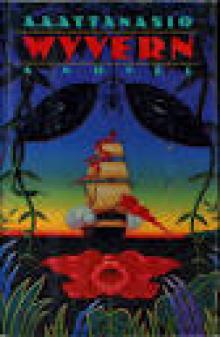 Wyvern
Wyvern The Last Legends of Earth
The Last Legends of Earth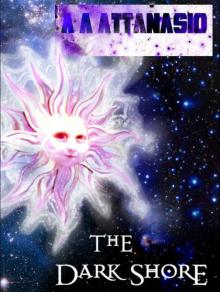 The Dark Shore (The Dominions of Irth Book 1)
The Dark Shore (The Dominions of Irth Book 1)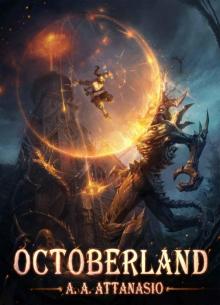 Octoberland (The Dominions of Irth Book 3)
Octoberland (The Dominions of Irth Book 3)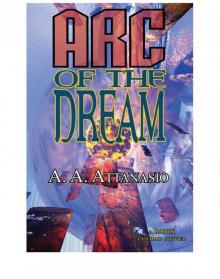 Arc of the Dream
Arc of the Dream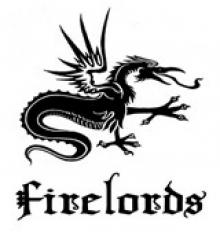 p1b6fn7sdh1ln0g4v1pkvkuqim54
p1b6fn7sdh1ln0g4v1pkvkuqim54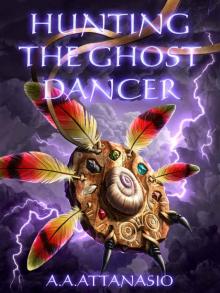 Hunting the Ghost Dancer
Hunting the Ghost Dancer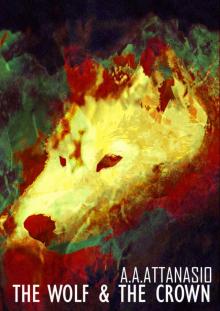 The Wolf and the Crown (The Perilous Order of Camelot Book 3)
The Wolf and the Crown (The Perilous Order of Camelot Book 3)